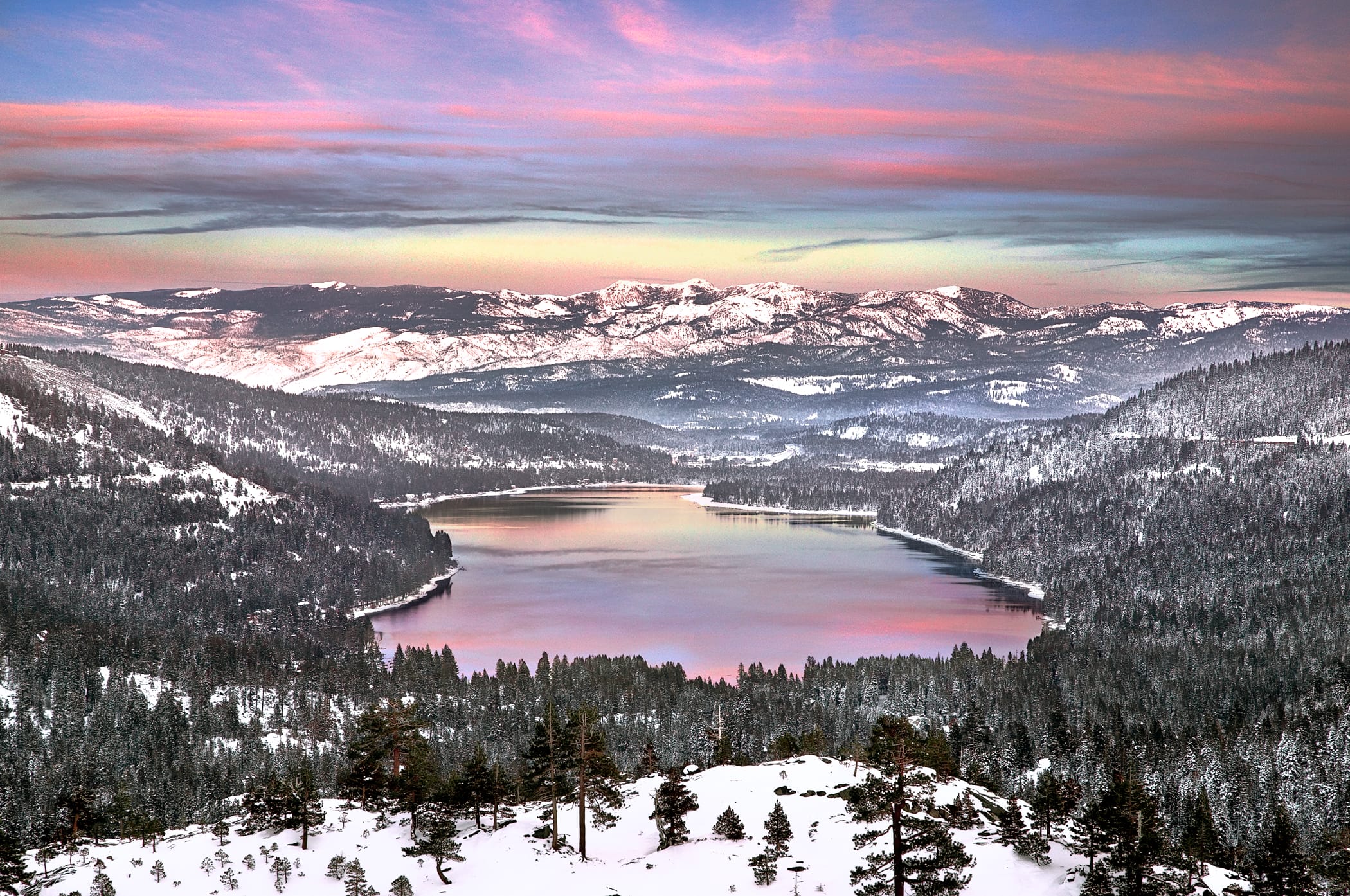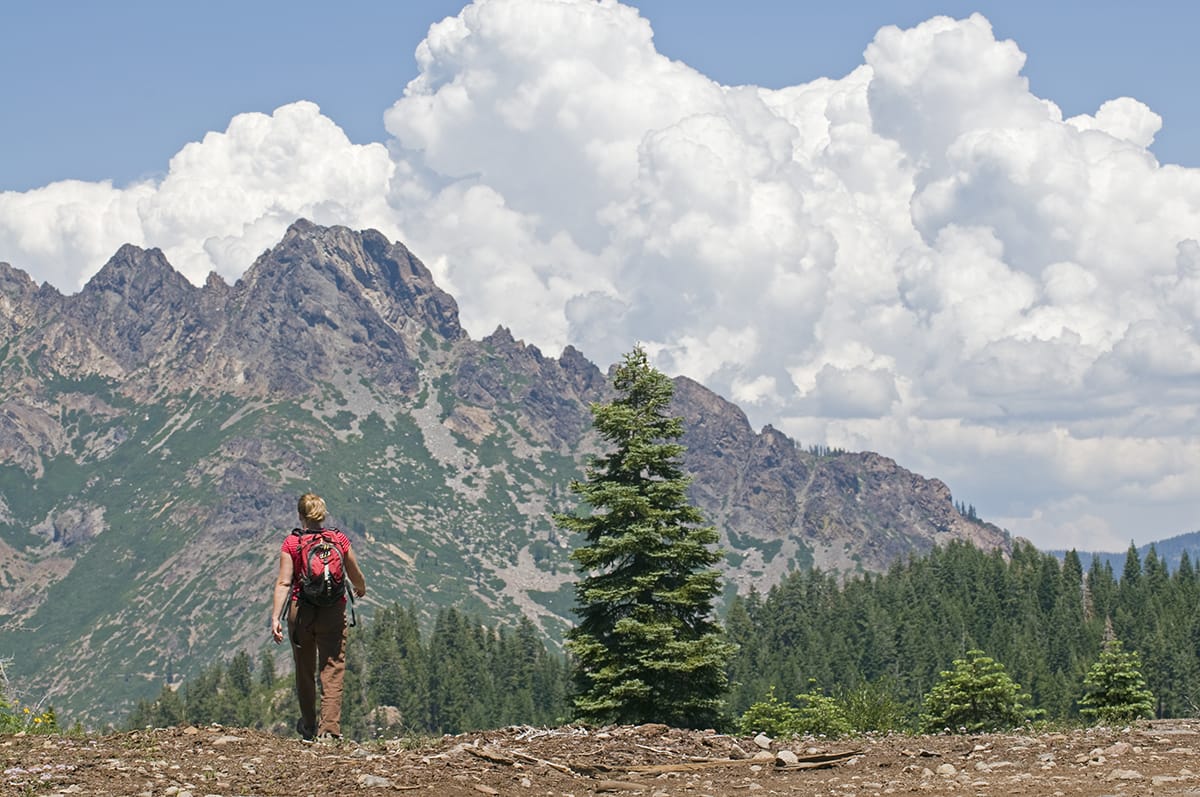With 2.4 million acres of land stretching from California to Washington, Sierra Pacific Industries (SPI) is the largest private landowner in the United States. But since its founding in 1949, the timber giant has allowed the public to access virtually all of it.
The one exception centers on public safety, with areas that are being actively harvested off limits. That, however, is just 2 to 5 percent of the firm’s holdings at any given time. For SPI’s chief executive officer, Mark Emmerson, the issue of public access stems from a philosophical question, as much from economics or logistics.
“Yes, the land is privately owned, but what does anyone really own?” he muses. “Do you own the wildlife, the plants, the water, the air?”
This raw, beautiful landscape in Southern California is home to Indigenous heritage sites, and it provides critical habitat for threatened and endangered species. Urge President Biden to safeguard this extraordinary landscape today!

Terminating at Donner Summit, a 15-mile trail system connects Donner Lake, shown here, with Webber Lake and Webber Falls, once owned by Sierra Pacific Industries and now conserved as public land in California’s Northern Sierra. Photo: Elizabeth Carmel
Perhaps it’s no surprise that Emmerson and his father, 93-year-old Red Emmerson, have channeled their respect for the land and its many attributes into more permanent forms of access and protection. Since 1990, the third-generation, family-owned forest products company has partnered with Trust for Public Land to place over 30,000 acres of the California Sierra into public ownership.
You might wonder: What’s a conservation organization like Trust for Public Land doing with a hugely successful timber behemoth? Don’t they work at cross purposes? The answer, you might be surprised to hear, is not at all.
In the Sierra and elsewhere, when we purchase land from private landowners like SPI, we retain the integrity of the forest, including the opportunity to sustain the future ecological value of that area.
In the case of SPI and TPL, the collaboration has resulted in 16 separate conservation projects, from 480 acres at Webber Falls to 6,063 acres along the North Fork American Wild and Scenic River. Working together, SPI and Trust for Public Land identified the landscapes and ecosystems whose protection would have the greatest benefit, not only for the environment but also for the surrounding communities.

— Dave Sutton, TPL director of California land conservation
Looking back over the catalogue of conservation work, Emmerson is reluctant to single out one but then relents. Webber Falls, with two distinct cascades and three terraced pools, is exceptional. Its surrounding trails are part of a 15-mile system that connects Webber Lake all the way to Donner Summit. “It’s just a beautiful piece of the earth,” Emmerson says.
As one of the largest American lumber manufacturers, SPI is, of course, interested in land that will yield timber products. But amidst the properties they own are islands of what Emmerson calls “rocks and ice”—that are beautiful to behold, but that don’t lend themselves to efficient logging. “I think it’s a responsibility when we have this much land,” he says, referring to the portfolio of conservation projects. “Some of the land is not suitable for growing and harvesting commercial timber. Some of it is better suited for recreation.”
For TPL, the partnership has meant more than acres protected, as vital as that is. In 2020, SPI established a fund to ensure TPL’s conservation work in California will continue in perpetuity. The endowed fund creates permanent funding in support of TPL’s Director of California Land Conservation. That position is currently held by Dave Sutton, who’s been with TPL since 1989. In that time, Sutton has helped protect more than 100,000 acres across nine western states. Emmerson credits the successful partnership between Sierra Pacific Industries and TPL, in part, to the trusting relationship he and Sutton have built.
“I’ve worked with him for a long time and what Dave says happens. He doesn’t overpromise. We’ve done a lot of deals together on a handshake.”

But the partnership goes deeper than either Emmerson or Sutton—it’s built upon alignment of the two organizations’ shared values regarding building and sustaining long-term relationships.
Those shared values and the mutual trust that underly the handshake deals have spawned a sort of greatest hits of conservation in the state of California: Mount Lola and Castle Peak; Baltimore Lake; South Yuba River; English Mountain, Phoenix Lake, and Rubicon River; Barker Pass; Middle Fork American River; Sierra Crest, Carpenter Ridge, and Clavey River, among others.
Sutton says working with SPI is a privilege precisely because of the company’s integrity and strong values. “We’ve done a lot of work and a lot of projects together over the years, and SPI and the Emmerson family have always been true to their word,” he says. “I think the secret to our long-term relationship of almost 35 years is consistency—of business ethics and practice, culture, reliability. We trust each other unequivocally, and there are no surprises. We at TPL had to earn that, and I believe we have.”
The job of protecting such landscapes continues. TPL Sierra-Cascade Regional Director Heidi Krolick says there are currently four more conservation projects with SPI in the works, including one that would complete protection of 35 miles of Pacific Crest Trail corridor in Northern California, as well as acreage in the Trinity Alps Wilderness and Castle Crags State Park.
Emmerson stressed that his family’s company refuses to steward the land for quick profit.
“Come and take a look at our land and how we manage it,” he says. “We do it according to science and not according to emotion. We grow significantly more than we harvest.”
In particular, SPI plans to double its inventory of trees over the next four decades through ambitious tree plantings, ranging from 6 to 12 million new trees a year. It will also increase the average size of its trees, from 18 inches in diameter to 30 inches in diameter.

What started as handshake deals has evolved into one of TPL’s longest and strongest partnerships with Sierra Pacific Industries and has helped protect beloved California outdoor places like the Castle Peak Trail. Photo: Scot Hampton
To reach those targets, the company just announced its new tree nursery in Siskiyou County. With wildfires ravaging the state’s forests in recent years, there is urgent demand for California-grown seedlings to help forests recover. Sierra Pacific received a grant from CAL FIRE to help get the nursery up and running; when it is fully operational in 2026, the nursery will produce 25 million seedlings annually.
Those seedlings will regenerate the forests of ponderosa pine, hemlock, and Douglas fir that run along the spine of the Sierra Nevada, a region that draws hundreds of thousands of people a year, and elsewhere across the state.
It’s through partnerships and collaborations—with communities, partner organizations, policymakers, and landowners like SPI—that TPL has made an impact over the past 50 years. “Together,” says Diane Regas, TPL’s president and CEO, “we have guaranteed that breathtaking sites like Barker Pass, Castle Peak, and Webber Falls will continue to shelter critical plant and animal species, provide clean air and water, and create recreational and economic opportunities for generations to come.”
Lisa W. Foderaro is a senior writer and researcher for Trust for Public Land. Previously, she was a reporter for the New York Times, where she covered parks and the environment.

Donate to become a member, and you’ll receive a subscription to Land&People magazine, our biannual publication featuring exclusive, inspiring stories about our work connecting everyone to the outdoors.

